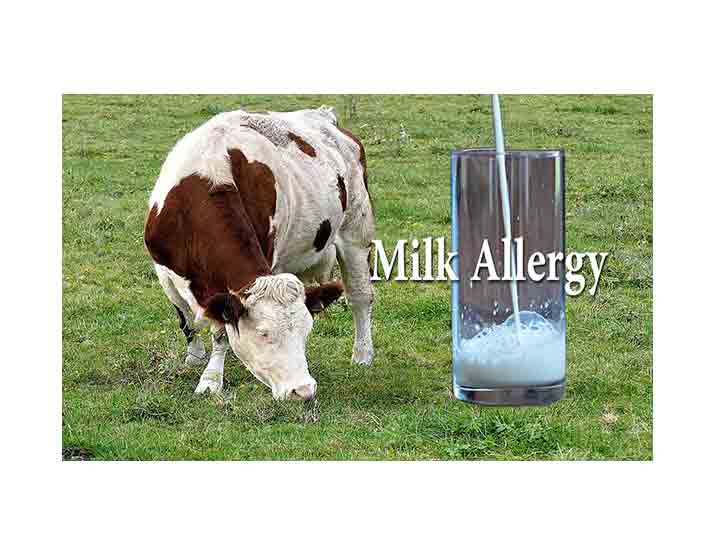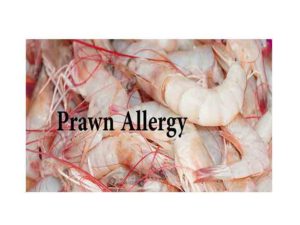Milk allergy is very important mainly in children. In fact it is one of the most common allergies in children. Milk allergy can occur to goat milk, buffalo milk, sheep milk and other mammal’s milk.
Sometimes milk allergy is confused with milk intolerance which is not an allergy.
Sources of Milk
Sources of allergy causing milk proteins are mainly found in dairy products, including:
- Whole milk, low-fat milk ,butter milk, skimed milk
- Cheese and anything that contains cheese
- Ice cream, gelato
- Butter
- Yogurt
Milk in different forms are used in several ingredient in processed foods, including baked goods and processed meats. Few hidden sources of milk include:
- Whey
- Casein
- Protein powders
- Hydrolysates
- Artificial cheese flavor and butter flavor
- Candies, such as chocolate, nougat and caramel
- Ingredients with prefix “lact” — such as lactose and lactate
Milk Allergy Symptoms
The most common symptoms include:
- Itching in and around the mouth
- Tingling sensation around mouth
- Swelling of the lips, tongue, face, throat
- Swelling other parts of the body
- Hives, itching or eczema
- Cough, wheezing or respiratory difficulty
- Nasal congestion
- Abdominal pain, nausea, vomiting, diarrhea
- Dizziness, lightheadedness or fainting
Milk Allergy Causes
Cow’s milk contains two main proteins which are responsible for allergic reactions. These include:
- Casein, found in the solid part (curd) of milk that curdles
- Whey, found in the liquid part of milk that remains after milk curdles
An individual can have allergy to one or both of the proteins. Less commonly, people allergic to cow’s milk are also allergic to soy milk.
Milk Allergy Diagnosis
Symptoms.
symptoms you are experiencing.
Family history of allergies.
other family members are suffering from any form of allergic disorders.
A physical examination.
A skin prick test.
A positive prick test only indicates the people is sensitization.
A blood test.
A blood test can performed to measure the allergen-specific immunoglobulin E (IgE).
Elimination diet.
Oral food challenge.
Milk Allergy Treatment
- Avoidance is the best preventive measure.
- However, an individual may unknowingly come in contact with the food and lead to an allergic reaction.
- Mild to moderate allergic reaction: over-the-counter or prescribed antihistamines are helpful.
- Severe allergic reaction: If there is severe reaction or anaphylaxis one must inject adrenaline/ epinephrine in an appropriate dosage.
If someone has adrenaline autoinjector then he can use it otherwise one has to attend the nearest hospital as early as possible.
One must carry his adrenaline autoinjector all the time if an allergist prescribed it.
Milk Allergy vs Milk intolerance
Some persons may develop indigestion, gaseous distention of abdomen or diarrhea after taking some food. This may not be due to food allergy but another condition called food intolerance. Milk intolerance is not immunologically mediated and it is less severe than allergy.
Q & A on Milk Allergy
What are the symptoms of a milk allergy in adults?
- Symptoms are similar to any allergic reactions like itching, urticaria etc
Can you all of a sudden become allergic to milk?
- Yes it can occur
What is allergy to milk called?
- Called Milk Allergy
Is a milk allergy the same as lactose intolerance?
- No they are different. See above article for details
Milk allergy treatment
- Mild to moderate allergic reaction: over-the-counter or prescribed antihistamines
- Severe allergic reaction: injection adrenaline/ epinephrine in an appropriate dosage.
Milk allergy in adults
- Allergy to milk mainly occur in children. However it can occur in adult also. Symptoms and treatment is same.
Sudden milk allergy in adults
- Yes it can oocur
Milk allergy rash
Rashes may occur mainly in the form of urticarial rash. However erythematous rash can occur with itching
Milk allergy symptoms
The most common symptoms include:
- Itching in and around the mouth
- Tingling sensation
- Swelling of the lips, tongue, face, throat
- Swelling in any other parts of the body
- Hives, itching or eczema
- Cough, wheezing
- Nasal congestion
- Abdominal pain, nausea, vomiting, diarrhea
Milk allergy symptoms in babies
- The most important symptoms are the rashes. Others are same
Milk allergy test
- SPT or Skin Prick Testing
A positive prick test only indicates the people is sensitization.
- Blood Allergy Profile
A blood test can performed to measure the allergen-specific immunoglobulin E (IgE).




